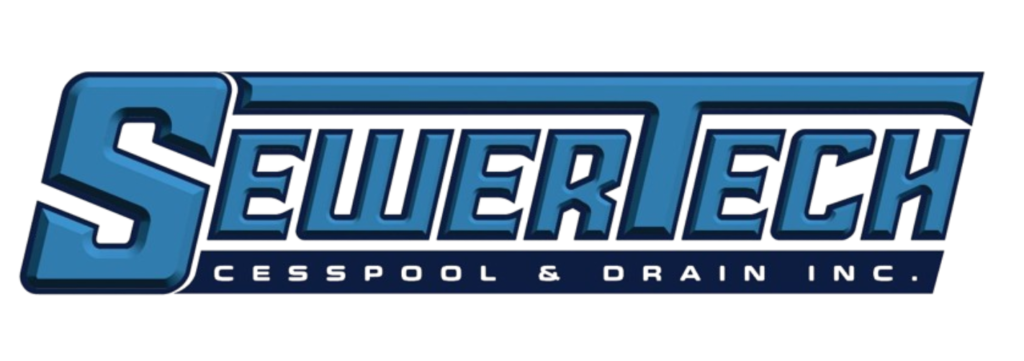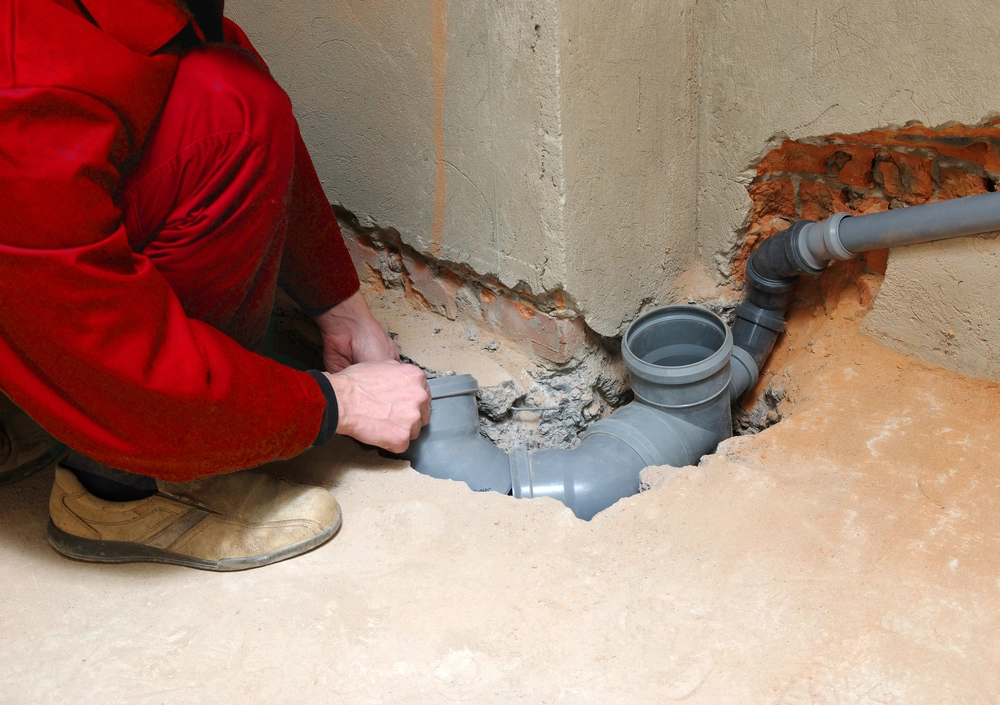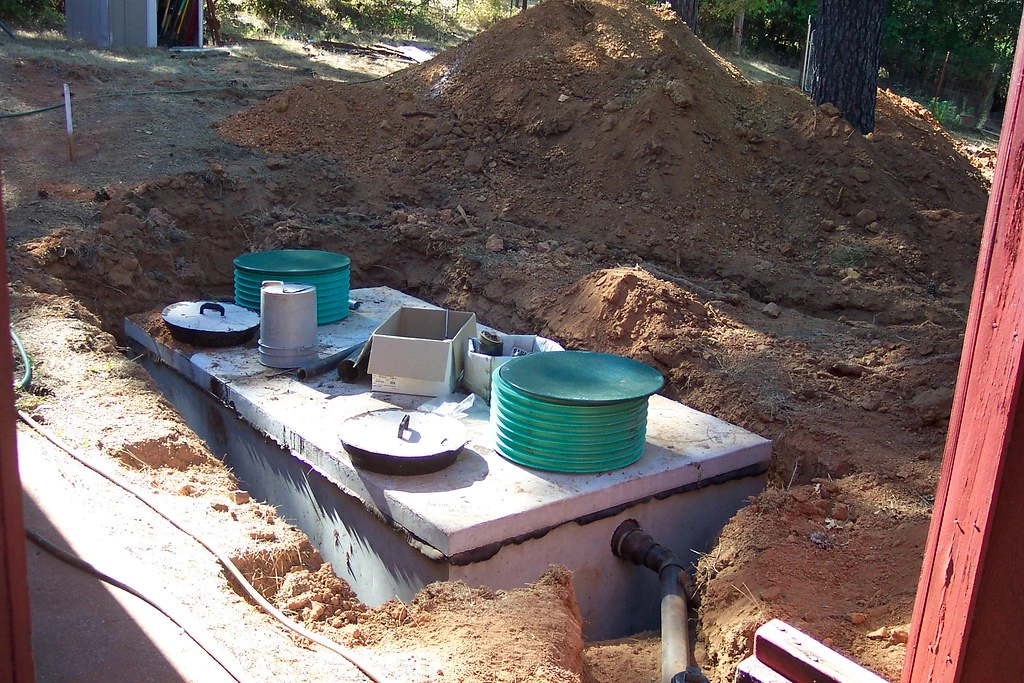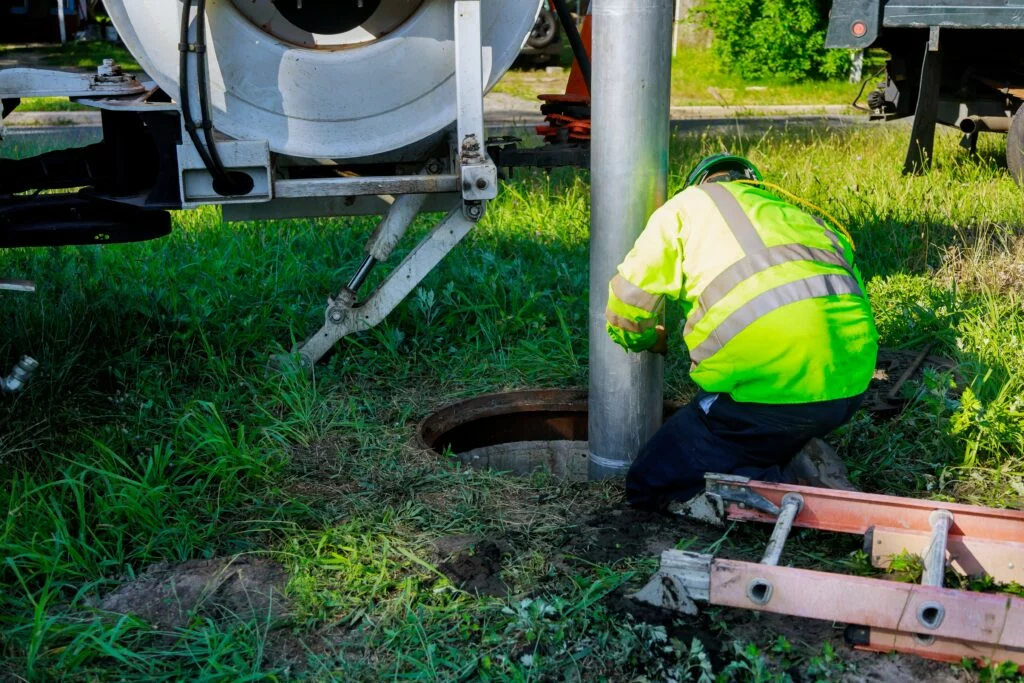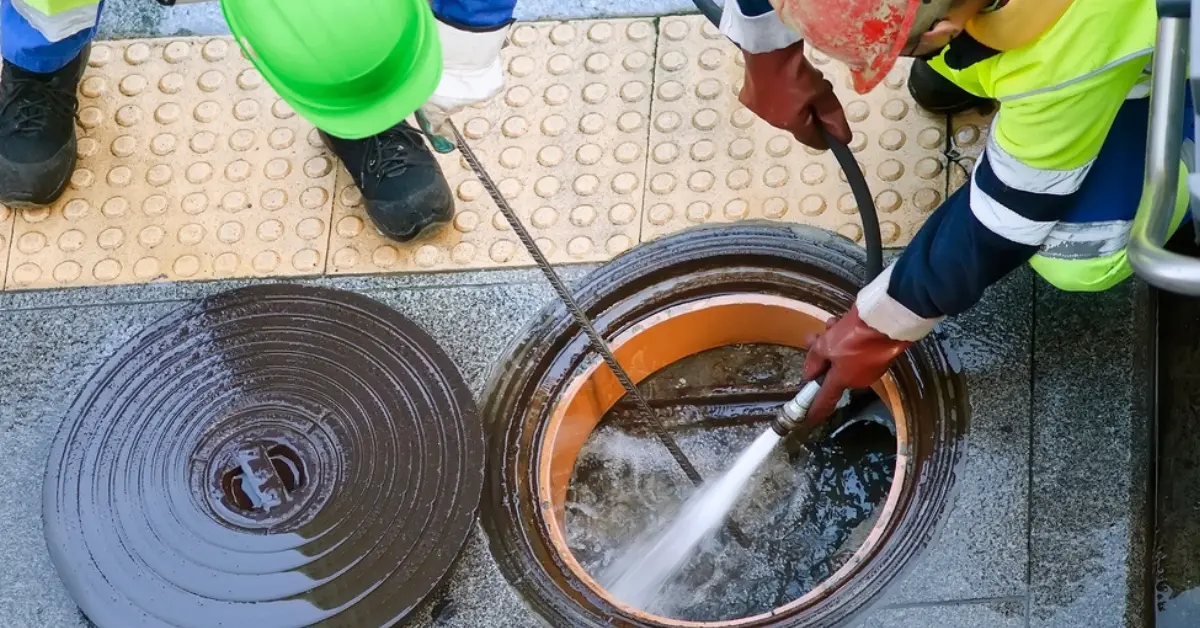Did you know the water you drink in Long Island comes from underground aquifers? That’s why Septic System Installation & Repairs is more important than you might think. Maybe you’ve noticed slow drains, strange odours, or soggy spots in your yard. These are your system’s way of waving a red flag.
So, what exactly does septic system installation and repair involve? Simply put, it’s making sure your tank and drainfield are working properly to safely handle wastewater from your home. A well-installed system lasts for decades, and quick repairs prevent messy backups, costly damage, and even potential harm to our local water.
At SewerTech LI, we guide homeowners through every step, whether it’s installing a brand-new system, fixing a problem, or keeping your septic healthy with routine maintenance. With our help, you don’t have to stress about your system. We make it simple, reliable, and worry-free for your home and family.
What is a Septic System?
A septic system is basically your home’s way of dealing with all the water you send down the drain. Every time you shower, wash dishes, or flush the toilet, that water flows into a buried tank in your yard. Inside the tank, the heavy stuff sinks, oils float, and the cleaner water in the middle gets pushed out to the drainfield.
From there, the soil naturally filters the water, removing germs and impurities before it makes its way back into the ground. You don’t really see or think about it because it works quietly in the background. But just like your car, it needs a little care now and then. With proper maintenance, a septic system can protect your home and keep Long Island’s water clean for many years.

Why Septic Systems Matter for Long Island Homes
Living on Long Island, especially in Suffolk County, means your home most likely relies on a septic system. And while you might not think about it often, your septic system is doing an important job every single day. It not only keeps wastewater moving safely away from your home, but it also protects the environment we all share.
Here’s why it matters so much: our drinking water comes from underground aquifers, and we’re surrounded by beaches, bays, and the Sound. When septic systems are old or not maintained, harmful waste can leak into the ground and eventually end up in the water. That can affect marine life, close down swimming spots, and even impact your family’s health.
Warning Signs You Need Septic Service
Your septic system usually works quietly in the background, but when it starts to struggle, it will send you clear warning signs. Catching these early can save you from bigger (and messier) problems down the road.
Here are some red flags to look out for:
- Slow drains – If sinks, tubs, or toilets are draining sluggishly, your tank might be filling up.
- Bad odours – A strong sewage smell in your yard or near drains is never a good sign.
- Pooling water – Wet or soggy spots around the drainfield, especially when it hasn’t rained, often point to a failing system.
- Backups – Toilets or drains backing up with wastewater are an emergency signal.
- Lush grass over the tank – If one patch of lawn is greener and thicker, it could mean wastewater is leaking below.
Types of Septic Tanks
When it comes to handling wastewater at home, your septic tank does a lot of the heavy lifting and on Long Island, picking the right one is key. A proper septic tank installation isn’t just about putting a tank in the ground; it’s about matching the system to your yard, your home size, and following all the local rules in Suffolk County.
Here are the most popular options homeowners usually go with:
Concrete Tanks – Built tough and long-lasting, though heavy enough to need professional installation.
Fibreglass or Plastic Tanks – Lightweight, easier to install, and resistant to cracking.
Advanced Treatment Systems – Modern, eco-friendly systems that help protect Long Island’s water and bays.

The Step-by-Step Guide to Installing a Septic System
Getting a new septic system might sound intimidating, but don’t worry. I’ll walk you through it like we’re talking over coffee. Here’s how it usually goes:
Step 1: Check the Property
First, a pro will check out your yard. Testing the soil, water levels, and choosing the best spot. Think of it as giving your yard a little “health check.”
Okay, now that your yard has passed its check-up, let’s move to the paperwork part (I know, not as fun, but necessary!).
Step 2: Paperwork & Permits
Before digging starts, permits are needed to follow Long Island’s rules. The good news? Your installer usually handles this for you, so you don’t have to stress.
Paperwork done? Great! Now here’s the exciting part. Time to break some ground.
Step 3: Dig & Place the Tank
This is when the big machines come in. A hole is dug, and your septic tank is carefully lowered underground. It’s like setting the foundation of a house. But for your water system.
Tank’s in? Perfect. Let’s move on to the real magic, where the water actually goes.
Step 4: Build the Drainfield
Next, pipes or chambers are installed so the treated water can safely soak back into the soil. Think of this step as nature’s way of recycling.
Almost there! Let’s finish it up.
Step 5: Connect & Test
Finally, your home’s plumbing is hooked up, the system is tested, and the crew covers everything back up. By the end, your yard looks neat again and your septic system is ready to quietly do its job every day.
Septic System Repair or Replacement: Which Is Right for You?
We know, septic troubles can make any homeowner feel a little overwhelmed. Maybe you’re seeing signs that something’s wrong, or you’ve been told you need work done… but do you fix what’s there, or start fresh? Let’s walk through this together.

When a Simple Repair Is All You Need
Sometimes, it’s just a small issue. Like a clogged pipe or a tired pump. If your system is fairly new, has been well cared for, and you’re dealing with one annoying symptom (one slow drain, a little odor after heavy rain), a repair could be all it takes. Think of it like fixing a leaky sink. Targeted, affordable, and done before you know it.
When It’s Time for a New System
Other times, patching up just won’t cut it. If you’re dealing with the same problem again and again, have squishy spots in the yard that won’t go away, or your home’s original system is decades old, replacement might be your best and smartest option. It’s not just about stopping the trouble now; it’s about peace of mind for years ahead.
Plus, here on Long Island, many older systems don’t meet today’s environmental standards. Replacing it with a modern system helps protect our water and may even qualify you for financial help.
Long Island Septic Laws, Regulations, and Permits
Let’s talk about permits. We know, it sounds boring, but it’s super important! Here on Long Island, septic systems are regulated by the County Health Department to protect our drinking water and environment. All septic system work is regulated by your local County Health Department. You will work directly with either the:
- Suffolk County Department of Health Services (SCDHS)
- Nassau County Department of Health (NCDOH)
You cannot begin any significant work without their approval.
A few key rules you should know:
- Advanced Systems Required: In many areas, you can’t just replace an old system with a similar one. Suffolk and Nassau often require advanced nitrogen-reducing systems to help keep our bays and drinking water clean.
- Suffolk County Grants: Good news! Suffolk offers grant programs to help cover the cost of upgrading to these cleaner systems. It’s their way of encouraging eco-friendly choices.
- Setback Rules: Your system must be a certain distance from your home, property lines, and wells. This keeps everyone safe.
A good septic company like Sewer Tech Li handles the permit process for you. They know these rules inside and out, so you don’t have to. Think of permits not as red tape, but as a guarantee that your system is safe, legal, and built to last. We’ve got your back.
How Much Does a Septic System Cost on Long Island?
We get it, cost is a big deal. Septic system prices here vary based on a few key things, like your property’s soil, the size of your home, and the type of system you need.
On Long Island, many homes now need advanced nitrogen-reducing systems to help keep local water clean. These systems cost more upfront but are better for the environment and are often required.
Here’s a rough idea of what to expect:
- Replacing a tank: Starting around $5,000
- New conventional system: $12,000 – $20,000+
- Advanced system (I/A): $20,000 – $35,000+
Good news: Suffolk County offers grants to help cover costs for eco-friendly systems!
The best way to know your exact cost? Get a free site visit. We’ll assess your land, talk options, and give you an honest quote. No guesswork.
Maintenance: Keeping Your Septic System Healthy
“Maintenance” isn’t a fun word. But taking small, simple steps now can save you from big headaches (and even bigger bills) down the road. Here’s the lowdown on keeping your system happy:
Just like you change the oil in your car, your septic tank needs a regular pump-out, every 2 to 5 years. It clears out the gunk so everything keeps flowing smoothly.
Your septic system is alive with good bacteria! Help it out by only flushing the essentials (you know the ones). Keep things like wipes, grease, and harsh chemicals out of your pipes. Your tank will thank you.
No parking, no planting trees nearby. Your drain field likes its personal space! Keeping it clear helps it do its job filtering water naturally.
We’re always here to take a look and make sure everything’s running as it should. Think of it like a yearly physical for your septic system!

Why Homeowners on Long Island Choose Sewer Tech LI
We know you have options. But there’s a reason so many folks right here in Suffolk keep calling us back and referring to their friends and family, too.
It’s pretty simple, really: we treat your home like it’s our own.
We’re Local Through and Through
This is our home, too. We understand Long Island’s soil, water, and rules because we’ve worked with them for years. You won’t get a one-size-fits-all solution from us. You’ll get a system that’s right for your property.
No Stress, No Surprises
We handle all the paperwork, permits, and pesky details. You get clear communication, upfront pricing, and a team that shows up on time and treats your yard with respect. We clean up when we’re done, every time.
Real People, Real Honesty
We’ll never try to upsell you or recommend work you don’t need. If a repair makes sense, we’ll tell you. If it’s time for a replacement, we’ll explain why plainly and honestly.
We Care About More Than Just Pipes
We’re invested in keeping Long Island’s water clean and beautiful. For today, and for our kids. When you work with us, you’re supporting a local business that cares about this community.
FAQs
1. How do I know if my septic system needs repair or replacement?
Answer: Look for warning signs like slow drains, backups, foul odors, soggy areas in your yard, or a tank older than 20–25 years. A licensed professional can inspect your system and recommend repair or replacement.
2. How often should I pump my septic tank?
Answer: Most homes benefit from pumping every 3–5 years. Larger households or systems with heavy water use may need more frequent service.
3. Can I install a septic system myself?
Answer: Septic system installation requires professional expertise, permits, and inspections. DIY installation is not recommended and may violate county regulations in Suffolk.
4. What are the types of septic tanks available on Long Island?
Answer: Common options include concrete, fibreglass, and plastic tanks. Advanced treatment systems are also available for properties needing eco-friendly or nitrogen-reducing solutions.
5. How can I maintain my septic system?
Answer: Regular pumping, mindful water use, avoiding flushing grease or wipes, and routine inspections are key to a long-lasting system. Keep vehicles off the drainfield and monitor landscaping near the system.
6. Do I need permits to install a septic system in Suffolk?
Answer: Yes. Both counties require permits, soil tests, and inspections to ensure the system meets local regulations and protects Long Island’s water.
7. How long does a septic system last?
Answer: With proper maintenance, a septic system can last 20–40 years. Older systems may require upgrades or replacement to comply with current regulations.
8. Can SewerTech LI handle both installation and repairs?
Absolutely. SewerTech LI provides full-service septic solutions, including new installations, tank repairs, drainfield work, and ongoing maintenance.
